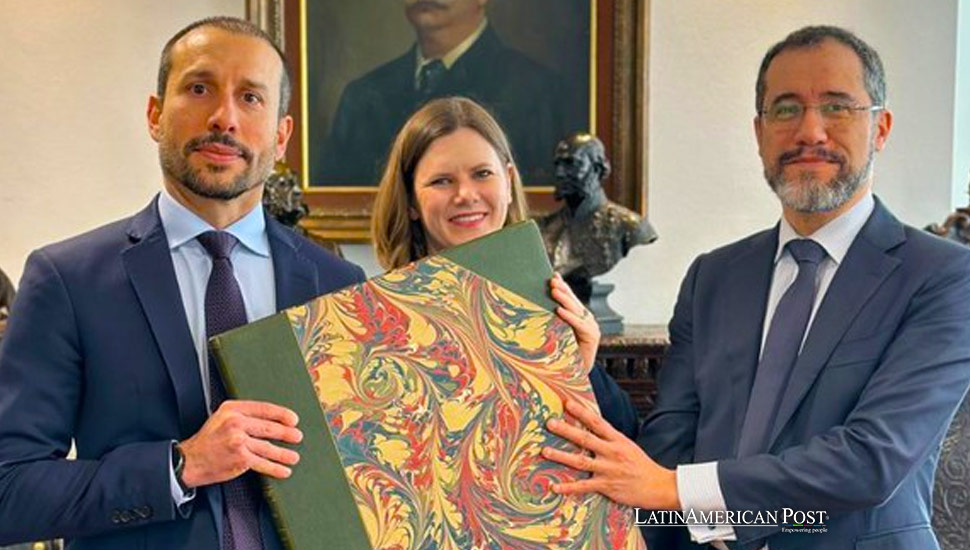Brazil Reclaims Stolen Amazonian Legacy in London

Brazil’s Federal Police, in collaboration with Scotland Yard, have successfully recovered a historically significant book stolen in 2008, illuminating Brazil’s rich biodiversity heritage.
In a remarkable feat of international cooperation and investigative persistence, Brazil’s Federal Police have reclaimed a precious slice of the nation’s natural history—a book detailing Brazil’s fauna and flora from 1823, stolen nearly two decades ago. The book, found in London this Wednesday, has been missing since its 2008 theft from the Emílio Goeldi Museum in the Amazonian state of Pará.
Recovery of Priceless Cultural Treasures
Titled ‘Simiarum et vespertilionum Brasiliensium species novae,’ this work by the German naturalist and explorer Johann Baptist von Spix catalogs new species of monkeys and bats in Brazil. It is a cornerstone of scientific exploration literature and was among several valuable items taken from the museum. It is a critical center for studying the Amazon’s ecological and sociocultural systems.
The successful recovery was made possible through a collaboration with the Art and Antiques Unit of the Metropolitan Police (Scotland Yard) in London, a division specializing in cultural heritage crimes. This event marks a significant victory in the ongoing efforts to protect and retrieve cultural assets globally.
This incident is part of a broader narrative of cultural repatriation facing many Latin American countries. Across the region, historical artifacts and valuable pieces of cultural heritage have been lost due to colonization, looting, and illegal art trafficking. Returning these items is often a complex and politically charged process that involves navigating international laws and cooperation agreements.
Another significant recovery was made in March when ‘De India utriusque re naturali et medica,’ a book by Dutch author Willem Piso dating back to 1658, was also retrieved in London. In December 2023, the Brazilian authorities repatriated ‘Reise in Chile und auf dem Amazonstrome,’ a detailed account of travels in Chile, Peru, and along the Amazon River by Eduard Friedrich Poeppig, published in 1836. Poeppig’s work offers extensive insights into the local cultures, flora, and fauna during the 19th century, providing a valuable resource for understanding the history and biodiversity of South America.
Significance of Emílio Goeldi Museum
The Emílio Goeldi Museum, founded in 1866 and linked to Brazil’s Ministry of Science and Technology, has been a beacon of research and knowledge in the Amazon region, housing collections crucial for scientific study and understanding of the world’s largest tropical forest. The thefts in 2008 posed a significant loss not only to Brazil but to the global scientific community, as the stolen items contained irreplaceable data and insights into the diverse ecosystems of the Amazon.
The Brazilian Federal Police’s ongoing mission to track down and repatriate all stolen works underscores a more significant commitment to preserving cultural and historical integrity. Efforts are also being made to identify those responsible for the thefts and any subsequent illegal sales of these artifacts.
These successful recoveries also highlight the importance of international collaboration in combating the theft and illegal sale of cultural objects. The partnerships between Brazilian authorities and international law enforcement agencies like Scotland Yard demonstrate how cross-border cooperation can effectively address such challenges.
The return of these items brings hope to other Latin American nations striving to reclaim their cultural heritage. Countries like Peru and Mexico have also been vocal about retrieving artifacts integral to their historical narratives, often in museums and private collections abroad.
Restoration of Knowledge and Identity
As more items are recovered and repatriated, they restore gaps in scientific research and historical records and serve as powerful symbols of national pride and heritage. For Latin American communities, especially indigenous groups, these artifacts are a link to their past and a critical component of their cultural identity.
Also read: Brazil’s Gabigol Case: Time to Legalize Performance Enhancers in Sports?
The story of the book’s return is not just about a single item being recovered; it’s about the ongoing journey toward cultural resilience and the reaffirmation of Latin America’s rich, diverse history. As Brazil and its neighbors continue to advocate for the return of their artistic and natural treasures, the global community watches and learns about the value of safeguarding cultural heritage for future generations.





